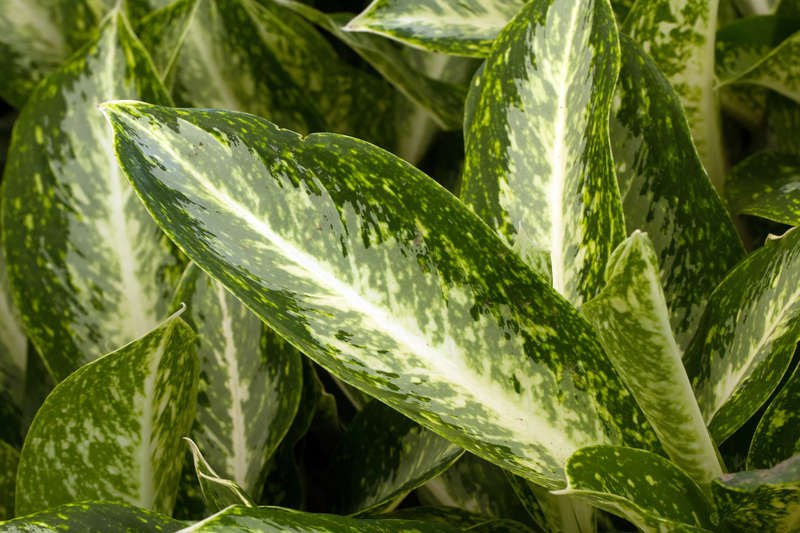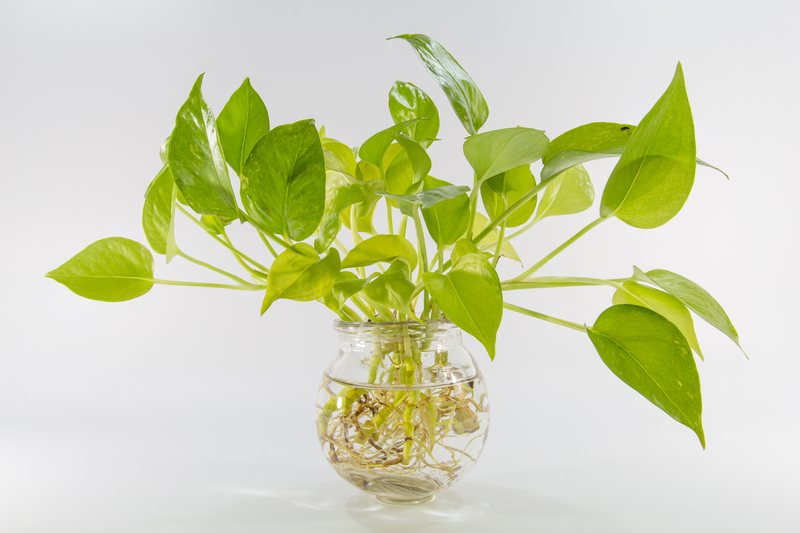A Beginner's Guide to Growing Orchids
Posted on 05/06/2025
A Beginner's Guide to Growing Orchids
Orchids are renowned for their exotic beauty and intricate blooms, making them a popular choice among houseplant enthusiasts. However, their reputation for being difficult can intimidate even the most avid gardener. Fear not; with some guidance, patience, and the right approach, growing orchids can be a rewarding experience even for beginners.
In this comprehensive guide, we'll explore everything you need to get started: understanding orchids, choosing the right variety, potting, light requirements, watering techniques, feeding, and troubleshooting common problems. Whether you have a green thumb or are just entering the world of gardening, this beginner's guide to growing orchids will help you successfully nurture these stunning plants at home.
Understanding Orchids: An Overview
Orchids belong to one of the largest and most diverse plant families in the world. There are over 25,000 naturally occurring species and more than 100,000 hybrids, each with unique colors, shapes, and growing preferences. Some orchids thrive outdoors, while many are perfectly suited as indoor houseplants.
Why Are Orchids So Popular?
- Striking Appearance: No other flower offers such diverse and mesmerizing blooms.
- Longevity: With proper care, orchid flowers can last for weeks, sometimes months.
- Variety: From compact miniatures to grand showstoppers, there's an orchid for every space.
- Symbolism: Orchids symbolize elegance, luxury, and strength around the world.

Choosing the Right Orchid for Beginners
Not all orchids are equally simple to grow, especially for those new to orchid care. Some species require highly specialized environments, while others are wonderfully adaptable. For starters, consider these varieties:
Best Orchids for Beginners
- Phalaenopsis (Moth Orchid): The most beginner-friendly orchid, known for its resilience and beautiful long-lasting blooms.
- Cattleya: Famous for their large, fragrant flowers and relatively easy care routine.
- Dendrobium: Versatile and available in many colors, they're slightly more demanding than Phalaenopsis but still manageable.
- Oncidium (Dancing Lady): Produces clouds of bright, cheerful flowers and adapts well to household environments.
What to Look for When Buying Orchids
- Healthy Roots: Look for firm, green or silvery roots. Avoid shriveled, mushy, or black roots.
- Vibrant Leaves: Leaves should be firm, unblemished, and medium to dark green.
- No Pests or Spots: Check for signs of pests (like mealybugs or scale) or fungal spotting on the plant.
- Flowers or Buds: Choose a plant with plenty of unopened buds for longer bloom time at home.
Essential Supplies for Growing Orchids at Home
While specialist equipment isn't necessary, assembling the following items will help ensure your plant thrives:
- Orchid-specific potting medium
- Plastic or terracotta orchid pots (with ample drainage holes)
- Fertilizer for orchids
- Spray/mist bottle
- Watering can with a narrow spout
- Humidity tray or pebble tray
- Sharp, sterile pruning shears
Orchid Potting: Mediums and Containers
Orchids are epiphytes, which means they often grow on trees or rocks in their native environments, rather than in soil. Because of this, using the right potting medium and pot is essential.
Choosing the Best Potting Mix
- Bark-based mixes: The most common for Phalaenopsis, providing excellent drainage and airflow.
- Sphagnum moss: Retains more moisture, suitable for seedlings or homes with dry air.
- Coconut husk, perlite, or charcoal: Often added to improve drainage or aeration.
Pot Selection
- Clear plastic pots: Help monitor root health and moisture but require decorative containers for aesthetics.
- Terracotta pots: Porous and allow excess moisture to evaporate.
- Always ensure pots have plenty of drainage holes.
Orchid Light Requirements: Providing the Right Amount
Light is perhaps the most important factor in successful orchid care. Too much or too little can hinder blooming and overall health.
How Much Light Do Orchids Need?
- Phalaenopsis: Bright, indirect light. An east-facing window is ideal. Avoid harsh midday sun.
- Cattleya: Moderate to bright light, can tolerate some direct morning sun.
- Dendrobium/Oncidium: Need slightly more light, but still never direct afternoon sun.
Signs Your Orchid Needs More or Less Light:
- Too little light: Dark green leaves with slow growth, few or no blooms.
- Too much light: Yellowish leaves or reddish/purple spots (sunburn).
Tip: Use a sheer curtain to soften south or west-facing windows, and rotate the pot occasionally for even growth.
Watering Orchids: Techniques and Frequency
Watering is often where new orchid growers go astray. Orchids are sensitive to both overwatering and underwatering, so it's important to understand your plant's needs.
General Orchid Watering Guide
- Water once a week for most orchids.
- Allow the potting medium to dry out slightly between waterings.
- Water thoroughly, allowing liquid to flow from the pot's drainage holes.
- Use room-temperature water, preferably rainwater, distilled, or filtered.
Never let your orchid sit in water! Standing water can quickly lead to root rot.
How to Know When Your Orchid Needs Water
- Check the potting medium: Stick your finger in an inch down. If it feels dry, it's time to water.
- Observe roots: Silvery-white roots signal the need for water; green roots mean your orchid is sufficiently hydrated.
Humidity and Airflow: Keeping Orchids Healthy
Orchids prefer environments with moderate humidity and good air circulation. Aim for 40-60% humidity for most types.
- Place your orchid on a humidity tray or shallow dish filled with pebbles and water. Ensure the pot sits above the waterline.
- Group orchids or other houseplants together to increase humidity naturally.
- Mist the leaves in the morning (avoid the flowers and excess misting of the crown).
- Ensure air can move around the orchid--open windows occasionally or use a small fan (avoid cold drafts).
Feeding and Fertilizing Your Orchid
Orchids are light feeders compared to many houseplants. Too much fertilizer can do more harm than good. Follow this simple routine for best results:
- Use a balanced, water-soluble orchid fertilizer (20-20-20 or similar).
- Fertilize "weakly, weekly"--use 1/4 to 1/2 the recommended dose every other watering during active growth.
- Do not fertilize when the plant is dormant or not actively growing.
- Occasionally "flush" the potting medium with plain water to avoid salt buildup.
Repotting Orchids: When and How
Orchids don't need frequent repotting--generally once every 1-2 years. Repotting is necessary when:
- The potting medium breaks down, becoming mushy or sour-smelling.
- Roots are growing out of the pot or are tightly tangled.
- After flowering has finished and new growth appears.
Steps for Repotting Orchids
- Choose a pot only slightly larger than the current one.
- Gently remove the orchid, shake off old medium, and trim any dead roots.
- Place the plant in fresh orchid mix, spreading out the roots.
- Do not bury the stem; orchids like to "sit high."
- Wait a week before watering, to let wounds heal and prevent rot.
Troubleshooting Common Orchid Problems
Even the best-cared-for orchids may experience issues. Here are some common problems and solutions:
- Yellow Leaves: Usually a sign of overwatering or too much sun. Adjust your care routine accordingly.
- No Blooms: May be due to inadequate light or not enough temperature variation between day and night.
- Wrinkled Leaves: Underwatering or root damage. Check the roots and water more consistently.
- Sticky Leaves or White Cottony Bumps: Usually pests like aphids or mealybugs. Treat with a gentle soap solution or wipe with rubbing alcohol.
Tip: A healthy orchid should gradually produce new roots and leaves and will eventually send up a bloom spike.
Frequently Asked Questions about Growing Orchids
How long do orchids live?
With the right care, most orchids can live for decades. It's not uncommon for well-kept plants to last 10-15 years or more!
Should I cut the orchid flower spike after blooming?
- If the spike is green, you can cut it above a node to encourage reblooming.
- If it's brown and dry, trim it down to the base--this helps the plant focus on new growth.
Are orchids pet-safe?
Yes, most household orchids (including Phalaenopsis) are non-toxic to pets. However, avoid letting pets chew on the leaves or flowers.

Orchid Growing Success Stories
- Susan from Seattle: "I thought I'd never keep an orchid alive! With weekly watering and keeping it by a shaded window, it bloomed twice in one year."
- Mark in Miami: "Humidity made all the difference. I grouped several plants together and saw new spikes after just a month."
- Asha from London: "Repotting seemed daunting, but my orchid thrived after I gave it fresh bark and a smaller pot. It's put out so many new roots!"
Ready to Begin Growing Orchids?
With the right care and patience, anyone can enjoy the captivating beauty of orchids at home. Start with a beginner-friendly orchid like Phalaenopsis, pay close attention to light and watering, and don't be discouraged by minor setbacks. Every grower learns as they go!
For more tips, inspiration, and answers to all your orchid-growing questions, bookmark this beginner's guide to growing orchids and revisit as your collection flourishes.
Happy Growing!

